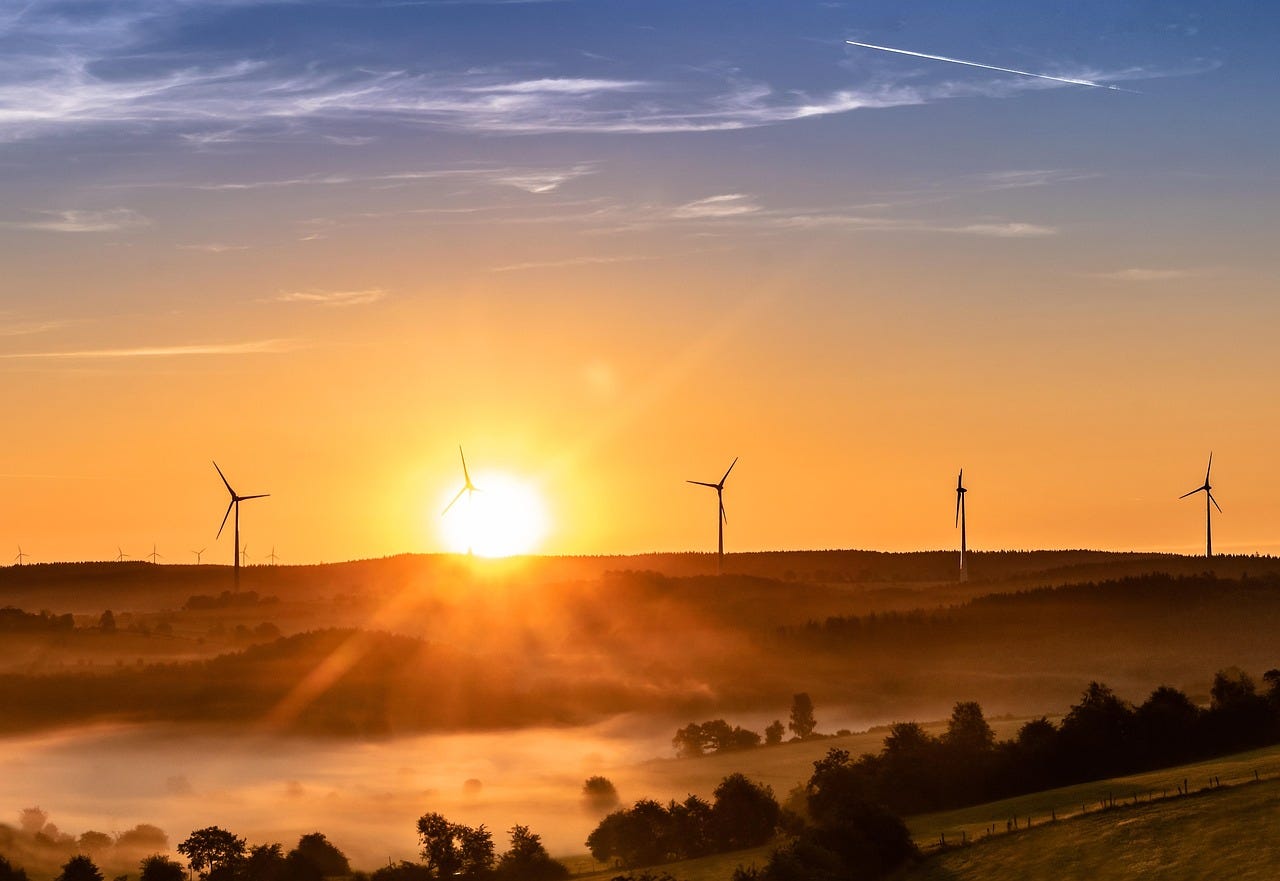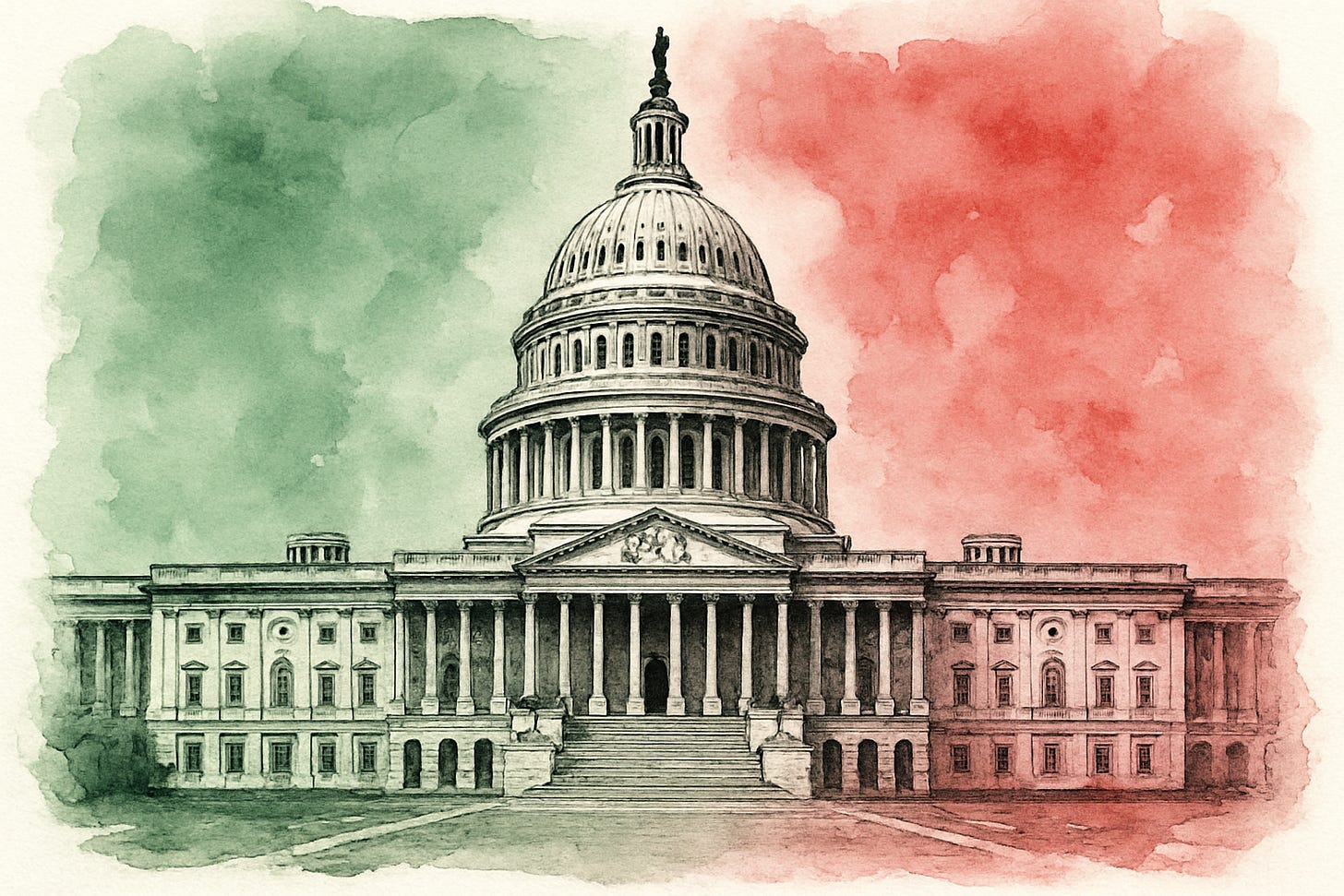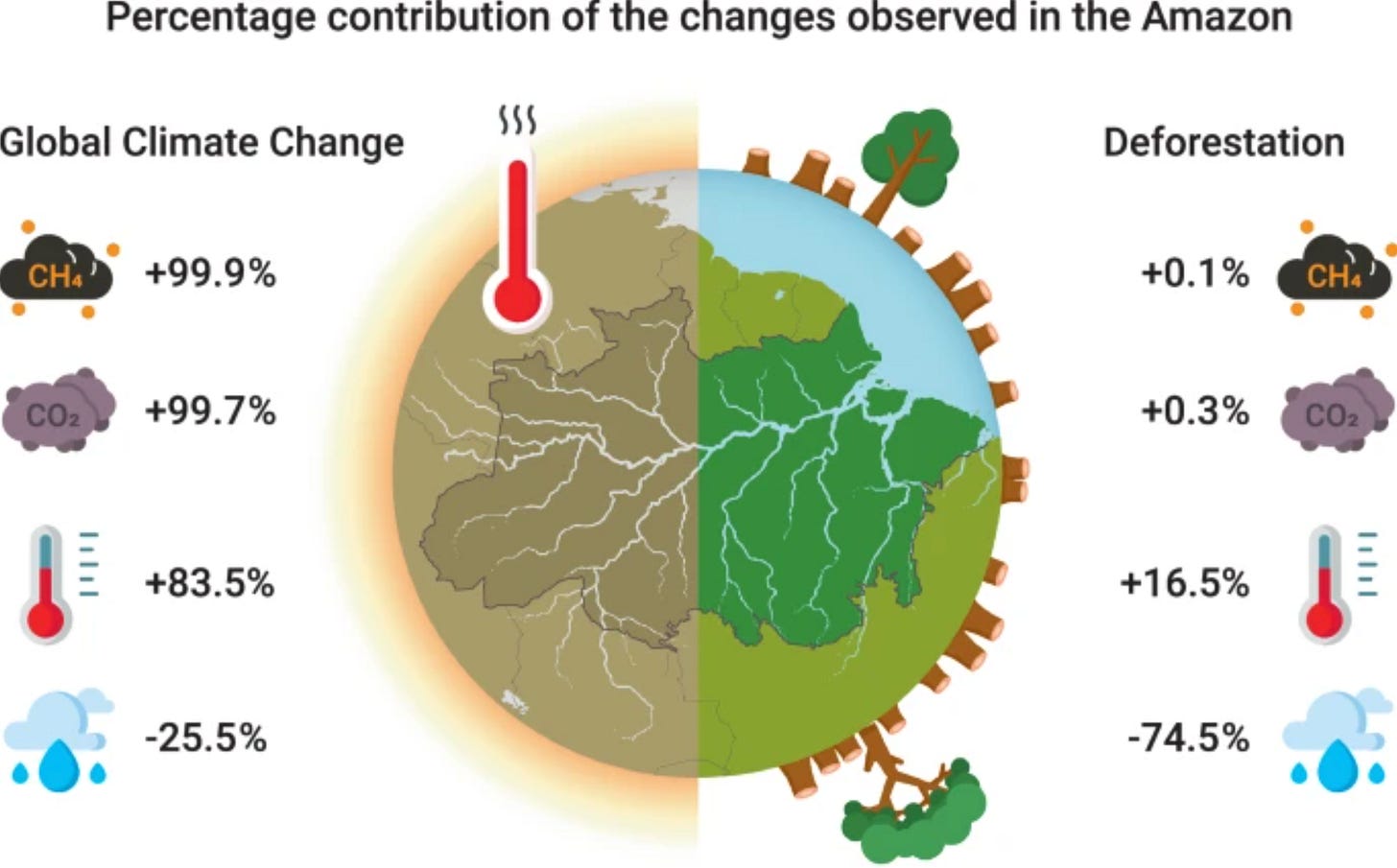Renewables rush to complete projects before Trump's cuts begin
Welcome to Callaway Climate Insights, your daily guide to global climate finance. Was this shared with you? Please enjoy and subscribe.
Today’s edition of Callaway Climate Insights is free for all our readers. We really want to bring you the best and latest in climate finance from around the world. Please subscribe now.
Electric vehicle buyers aren’t the only ones rushing this summer to beat the deadline to qualify for federal subsidies before they expire. Democratic state politicians are also against the clock as they seek any and all renewable energy projects that might be completed before the White House deadline that ends tax credits.
The new tax bill ends subsidies for EVs on Sept. 30, and dealerships have reported a surge in demand as buyers try to lock in deals in the next few weeks. Likewise, renewable energy projects are required to break ground by next summer and be completed by the end of 2027 to maintain the tax credits.
The tight deadlines on clean energy projects greatly narrow the number of projects that might qualify, and governors in states such as California, New York and Connecticut, among others, are trying to prioritize what might work and what won’t. Gov. Gavin Newsom in California last week issued an order for state officials to work with local authorities and energy companies to identify the projects that have the best chance of being completed and move them up the funding list.
Of course, by their very nature, the projects that will qualify will be smaller and have less impact, but the thinking is, apparently, that every little bit helps. More than $22 billion in clean energy projects have reportedly been canceled since President Donald Trump took office in January, eliminating thousands of green jobs and depriving states of much-needed electricity as prices continue to rise.
That’s not counting the big wind project the White House halted last week off the Connecticut shore, only months before it was set to come online. If there is any resistance in the green space to the havoc coming out of Washington, it is beginning to form in the race to bring these projects together.
Don’t forget to contact me directly if you have suggestions or ideas at dcallaway@callawayclimateinsights.com.
Follow us . . . .
Twitter | LinkedIn | Facebook | Instagram
Congress trading records reveal truth behind fiery ESG rhetoric
. . . . One of the benefits of allowing our federally elected officials to continue trading in public markets despite conflicts is that every once in a while, those trading records reveal a surprising truth. Mark Hulbert examines a new study that shows despite the fiery rhetorical differences between Democrats and Republicans on the issue of climate change and ESG investing, everybody pretty much ignores the theme in their own portfolios. Turns out our political leaders are much like average investors, happy to either support or disparage climate investing but in their own portfolios are simply chasing the highest returns. Though Hulbert does find that Democrats will tend to reduce holdings in a certain stock if its ESG rating falls, indicating a well-honed sense of political polls.
Thursday’s subscriber insights
Dutch pension funds turn up the heat on climate backsliders
. . . . One of the leading Dutch pension funds, which have been steadily divesting their holdings in fossil fuel companies in the past two years, turned up the heat on BlackRock BLK 0.00%↑ recently, withdrawing a mandate worth as much as $17 billion in favor of European asset managers who purport to care more about the climate.
PFZW, which manages about 250 billion euros ($290 billion) in benefits for healthcare and welfare workers in the Netherlands, pulled its mandate for BlackRock earlier this year, though it was reported this week. It will rely instead on a stable of European asset managers including UBS, Schroders, and M&G, according to Bloomberg.
BlackRock, whose founder Larry Fink was among the early financial leaders to promote the benefits of environmental, social and governance investing to help mitigate climate change, has been steadily retreating for the last few years in the face of political opposition from Republican governors and now President Donald Trump.
At least one other Dutch pension fund, PME, has said it is reviewing its mandate with BlackRock, which must weigh the challenge of keeping European clients happy with that of large U.S. clients in states such as Texas and Florida, and their lawyers. In a separate deal this week, Citi C 0.00%↑ said it plans to hire BlackRock to advise on about $80 billion of its wealthiest clients’ assets.
While European politicians have also engaged in climate backsliding in the face of electoral pressures, it’s heartening to see the big investors sticking to their strategies, at least for now. At some point, when the cycle swings back to renewable energy plays, they will be in a much better position to outperform.
Breaking down the failed plastic talks into three main challenges
. . . . The failure of the latest round of global plastics talks in Geneva last month illustrated the many disputes between countries, particularly oil countries and non-oil countries, on how to handle the millions of tons of plastic waste expanding into every aspect of our lives and health.
Here in a detailed analysis from someone who is a regular at these types of talks, our colleague, Doug Woodring, founder of the Ocean Recovery Alliance, writes from his base in Hong Kong that the issues can be broken down into three primary challenges.
Woodring writes that production caps, chemicals of concern, and of course, financing remain the major barriers to agreement and provides specific solutions to each in the hopes that the next round of talks, which would be the seventh, will finally yield a result.
Editor’s picks: AI’s insatiable power thirst; plus, wetlands under threat
Watch the video: Inside Climate News executive editor Vernon Loeb and clean energy reporter Dan Gearino discuss the mounting demand for electricity to power AI. The data centers that power artificial intelligence require huge amounts of electricity. Some experts estimate we’ll need as much as 25% more electricity by 2030, and 78% by 2050, to meet this demand alone. Whether that electricity comes from renewable energy or fossil fuels has big implications for climate change. Gearino explains why we should care about all this data center growth, what the current trajectory looks like, and ideas for a better path forward — for consumers and the climate.
New threat to wetlands protection
A new Clean Water Act rule is under consideration that could eliminate federal protections for many wetlands across the U.S., according to an internal EPA presentation obtained by POLITICO’s E&E News. Under the proposed rule, the federal government would regulate wetlands only if they meet a two-part test. The wetlands would need to contain surface water throughout the “wet season,” and they would need to be abutting and touching a river, stream or other waterbody that also flows throughout the wet season, according to the report. Fewer wetlands permits would be required under the new language, according to a slide from the presentation, which was confirmed by two EPA staffers who were briefed Wednesday on the rule.
Latest findings: New research, studies and projects
Why is rainfall falling in the Amazon?
The Amazon rainforest is one of Earth’s most diverse ecosystems, playing a key role in maintaining regional and global climate stability. However, recent changes in land use, vegetation, and the climate have disrupted biosphere-atmosphere interactions, leading to significant alterations in the water, energy, and carbon cycles. So say the authors of new research titled “How climate change and deforestation interact in the transformation of the Amazon rainforest,” published this week in Nature.com. The work shows: Deforestation in the Amazon has been identified as the main driver of declining rainfall, responsible for nearly three-quarters of the drop in dry-season precipitation since the mid-1980s. If current deforestation trends persist, by 2035 the region could lose another 7mm of rainfall in the dry season and heat up by 0.6°C, pushing the Amazon toward a drier climate.
More of the latest research:
Satellite Laser Ranging Reveals Sea-Level Rise Over Past 30 Years
Navigating the Water-Energy-Food-Ecosystem Nexus in the Mediterranean
Words to live by . . . .
“If all mankind were to disappear, the world would regenerate back to the rich state of equilibrium that existed ten thousand years ago. If insects were to vanish, the environment would collapse into chaos.” — Edward Osborne Wilson, American ecologist and entomologist.







Orsted is suing, Dale, and they certainly have a case. But playing on the national security card, as the White House did, makes it harder. Good to hear from you old friend.
Can anypne explain to me the legal implications of The Prfesident cancelling the CT wind project off shore ... Is their legal recourse?